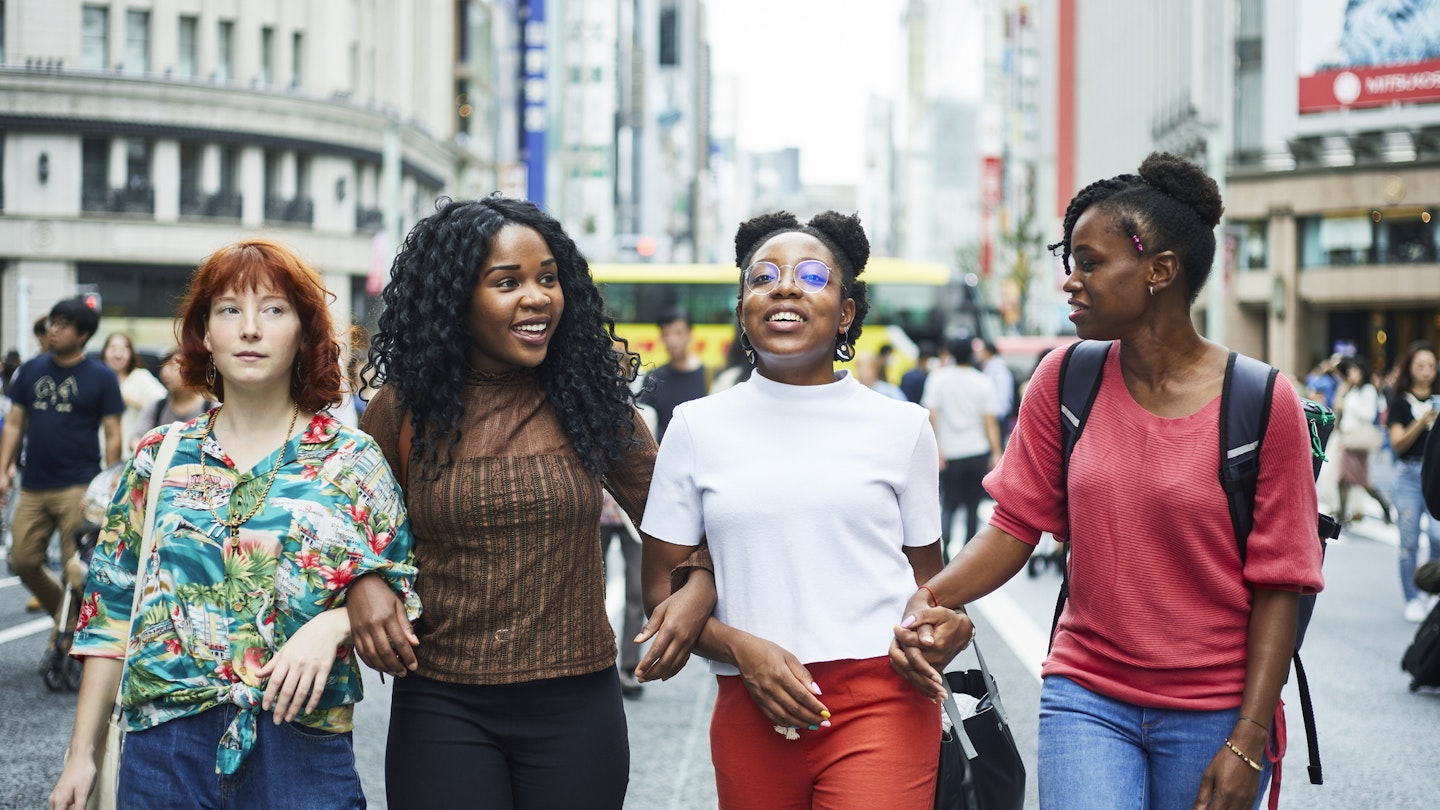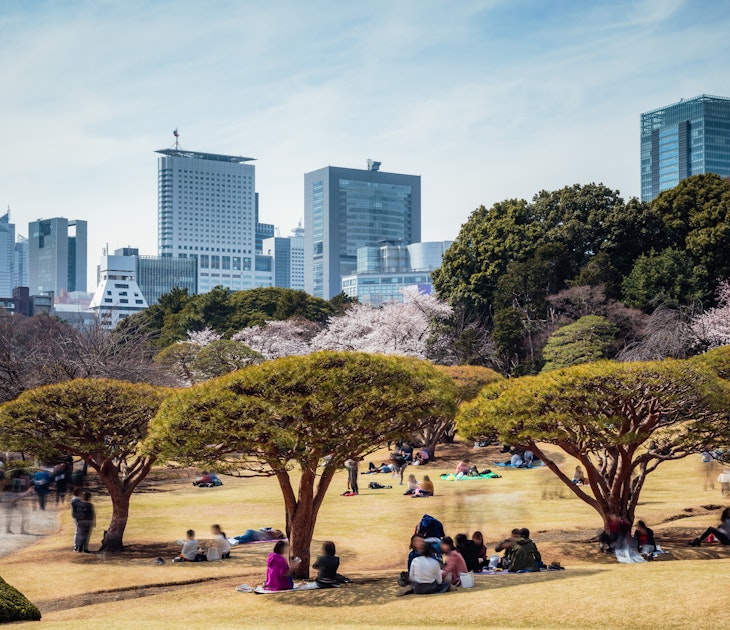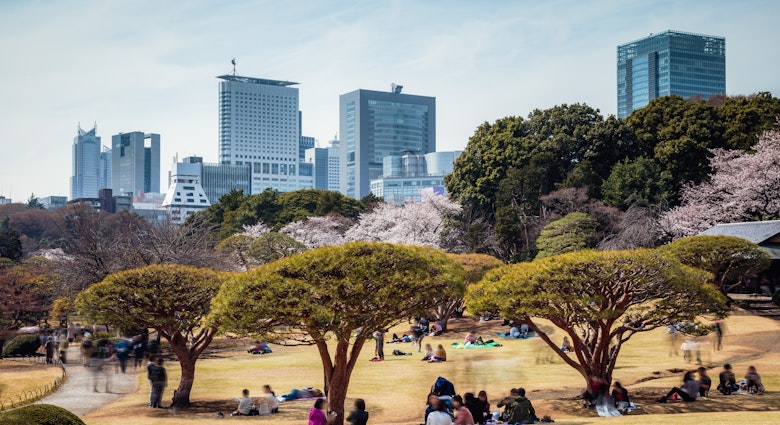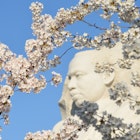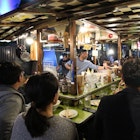Japan sparks all the senses, from its temple bells, capsule hotels and breezy cat islands to outdoor sculptures, pine-forest hot springs and umami flavors in world-class dining.
The downside of having so many incredible attractions in one country is feeling overwhelmed by the options – where to even begin? Don't worry – we're here to help with a round-up of the best things to do in Japan, both celebrated and under the radar.
1. Devour authentic Japanese food alongside locals
Wafting aromas of charcoal yakitori chicken skewers with sweet teriyaki sauce. The sizzle of okonomiyaki seafood and cabbage "pancakes" on the hotplate.
Everywhere you turn, restaurants and tiny diners whip up magnificent Japanese dishes. Osaka and Fukuoka's yatai (moveable stalls) make for a street-food paradise, and trying different flavors every day is one of the most exciting Japanese experiences.
For casual eating for couples and groups, a cavernous izakaya is a great choice – part bar, part restaurant, and dependable for a good-value meal of nabemono (hotpot dishes), Kobe and wagyū beef, sashimi and grilled fish.
Solo travelers (and fussy kids) can join the fun, picking out sushi from a kaiten-zushi conveyor-belt restaurant such as Numazukō in Tokyo.
Modern Japanese snacks that are faves with youngsters include cartoonishly fluffy hotcakes, omurice (rice-filled omelet and ketchup) and pyramids of strawberry-and-cream sando (sandwiches).
Plenty of small restaurants specialize in just one dish, such as kara-age (fried chicken), udon (thick wheat noodles), soba (thin buckwheat noodles) or katsu-kare (crumbed pork-cutlet in mild curry).
Even small yakitori (barbecued chicken skewers) bars can wow you with their simple smoky flavors that pair perfectly with a glass of sake.
Local tip: A teishoku (set menu) lets you try a bit of everything (rice and miso soup included) and is a popular choice for lunch or a casual dinner.
2. Chase cherry blossoms and festivals
Japan loves a festival. There are plenty of matsuri (festivals) to celebrate snow, summer, music or any subject you can dream up.
They are an entertaining way to watch dancers and drummers in the traditional dress of each region, enjoy some street food and be dazzled by lanterns and fireworks. Things stay mostly orderly and child-friendly.
Cherry blossom viewing is nature’s festival and attracts a global crowd – the pink and white blooms signal the end of March and winter. The top spots to see loads of flowers are Mount Yoshino, the Fuji Five Lakes region, castles like Hirosaki-jō, and all across Kyoto.
The other big festivals worth planning for include Kyoto’s summer bash, Gion Matsuri, in July, when you can catch giant floats and locals dressed in elegant yukata (cotton robes).
Sapporo’s annual snow festival in early February, Yuki Matsuri, includes the international snow sculpture contest, ice slides and mazes for kids.
3. Cycle between islands around the Seto Inland sea
The Shimanami Kaido is a place spun from the stuff of cyclists’ dreams. A 70km (43-mile) blue-painted cycle route unfurls across six islands, taking in jade mountains, orange groves and sea air.
From Onomichi on Honshū to Imabari on Shikoku, you can make stops to swim at secluded beaches, visit a museum dedicated to local painters, and visit shrines with sea views all to yourself.
Detour: To get even more off the beaten track, take the Tobishima Kaido cycle route.

4. Sip sake in Saijō
Come to a sake town for a blissfully quiet and meditative experience. Lift the small cup with two hands, one supporting the bottom. Admire the gold leaf dancing on the clear sake. Sip and feel the smooth, crisp liquid go down, chased with a hint of plum.
Then it’s on to another brewery next door. The process of transforming rice into alcohol goes back 2000 years, and some Saijō breweries date back 150 years.
The town is an austere set of eight white-washed breweries with brick chimney stacks proclaiming the name of each one in Japanese. Begin your taste-testing at the Kamotsuru Sake Brewing Company, where you can watch the brewing process.
Feudal lords drank here during the Edo period (1603–1868), and it was this brewery that produced a gold-leaf sake that US President Obama tried in Tokyo, poured by late Japanese President Abe. It may even entice you to declare your devotion to the god of sake.
5. Time jump to ancient Japan in Kyoto
With over 2000 exquisite temples, Kyoto is where traditional Japan thrives. Visiting splendid gardens and ceremonial teahouses is part of the deep dive into its history.
One of the most exquisite sights in the whole of Japan is the gold-leaf tiers of Kinkaku-ji. Its temple beams gloriously in the sun, with a mirror image in the pond below, framed by layers of pine trees.
The garden tradition in Kyoto has close ties to monks, emperors and philosophers. Japanese gardens have minimalist designs to allow breathing room for meditation and reflection.
The finest gardens in Kyoto show personality even through subtle choices: a weathered bridge to represent the march of time or unique pebbles. The most intriguing Zen garden is Ryōan-ji, a mysterious arrangement of 15 rocks.
Planning tip: There is a lot to love in Kyoto, so arrive early on a weekday to beat intense crowds and enjoy a peaceful time reflecting on Japan’s living traditions. Come evening, stroll through lantern-lit streets lined with 17th-century traditional restaurants and teahouses in the Gion entertainment and geisha quarter.
6. Zip across Japan on a bullet train
Its space shuttle nose glides into the station as if from another cosmos. That galaxy is Japan, where high-speed trains zip between cities at up to 320 kph (199 mph) with extra-terrestrial speed and comfort.
From the clean, comfortable seats, watch skyscrapers scroll by, transforming into pines and rural countryside in a flash.
There's a touch of yesteryear to the hard-wearing carpets and putty-colored luggage racks of some train models, but nothing looks weathered; it's just carriage loads of retro-futuristic charm.
Planning tip: The JR Pass and other all-inclusive train tickets can save you money and time. Some are cheaper to buy before arriving in Japan. Use the Japan Official Travel App to plan trips and compare costs with and without a pass.

7. Enter anime worlds in Akihabara and Den Den Town
Akihabara in Tokyo and Den Den Town in Osaka are heaven for anime otaku (fanatics). Even if you aren’t a fan, these specialist districts are worth visiting to experience the height of artistic obsession done the Japanese way.
In Japan, anime is more than something you watch – it is toys, video games, fashion and a way of life. Anime characters even emblazon credit cards, trains and government brochures. Lose yourself in these neighborhoods and see fans bringing characters to life in costume.
It’s easy to be dazzled and transported into a cartoon world (and consumerism). Under towers of bright lights, French-style maids and cosplay characters tout you to enter maid cafes in Akihabara.
Hundreds of stores have all the manga (comics), gashapon (gumball toy machines), retro collectibles and cutting-edge tech gadgets your otaku heart could want.
Detour: If you – or the kids – prefer a calmer way to be spirited away by anime, the Ghibli Museum in West Tokyo is also magical.
8. Sleep in a capsule hotel
Get ready for a wonderfully unique Japanese experience. Scan the stacks of capsules and step up the ladder into your "space pod."
Sit cross-legged (there’s enough room) and enjoy the plush mattress and the feeling of being cocooned in comfort.
A capsule hotel is where a bed is for sleeping and privacy – paramount in Japan. Fortunately, there is plenty of space in the communal bathrooms that usually have ample shower cubicles.
On the weekends, the cheaper capsule hotels might get drunken revelers snoring, but people are generally very respectful.
This is not a place for socializing, which is heaven for solo travelers who just want a good night’s rest in what looks like a spotless space station.
Planning tip: Capsules are separated into men's and women's sections. While originally intended for businessmen, today there are several women-only capsule hotels.
9. Indulge in a multi-course kaiseki meal
Capturing ingredients at the height of their freshness is the essence of a Japanese kaiseki meal. The tasting menu is where the pinnacle of Japanese design meets natural beauty and flavor with roots in sixteenth-century tea ceremonies.
In-season ingredients make up a formal kaiseki meal that might start with a course of sea urchin and horsehair crab, and then move on to a soup and a seasonal platter of dishes like sushi and Kameoka beef.
The subsequent courses are dedicated to in-season sashimi, color-coordinated vegetables and tofu, grilled seasonal fish, sake, rice in a clay hot pot and dessert. In spring, expect a budding cherry blossom to decorate your plate. Every course is a gasp-inducing journey through Japanese ceramics and presentation.
Local tip: You'll find some of the best kaiseki in Kyoto, such as at Kikunoi. If your budget can't stretch to the full kaiseki experience, attending a Japanese tea ceremony is an elegant way to capture some of the rituals and learn the traditions of tea.
10. Find your tribe in Tokyo's nightlife
Tokyo is the cool kid of Japan’s club and bar scene. That means a reliable night of house music at Womb and EDM at Atom Tokyo. Punk, metal and indie bars rock hard throughout "Shimokita" (Shimokitazawa).
Leading the way for LGBTIQ+ inclusion, the raucous crowds spilling onto the street around the gay clubs of Shinjuku-Nichōme show how progressive Tokyo can be.
Detour: For something more laid back, excellent whiskey bars operate across Tokyo. Japanese distillers regularly beat Scotland in whiskey competitions. Indulge at one of the best whiskey purveyors, Bar Benfiddich, if you can find this hidden, menu-less cocktail speakeasy.
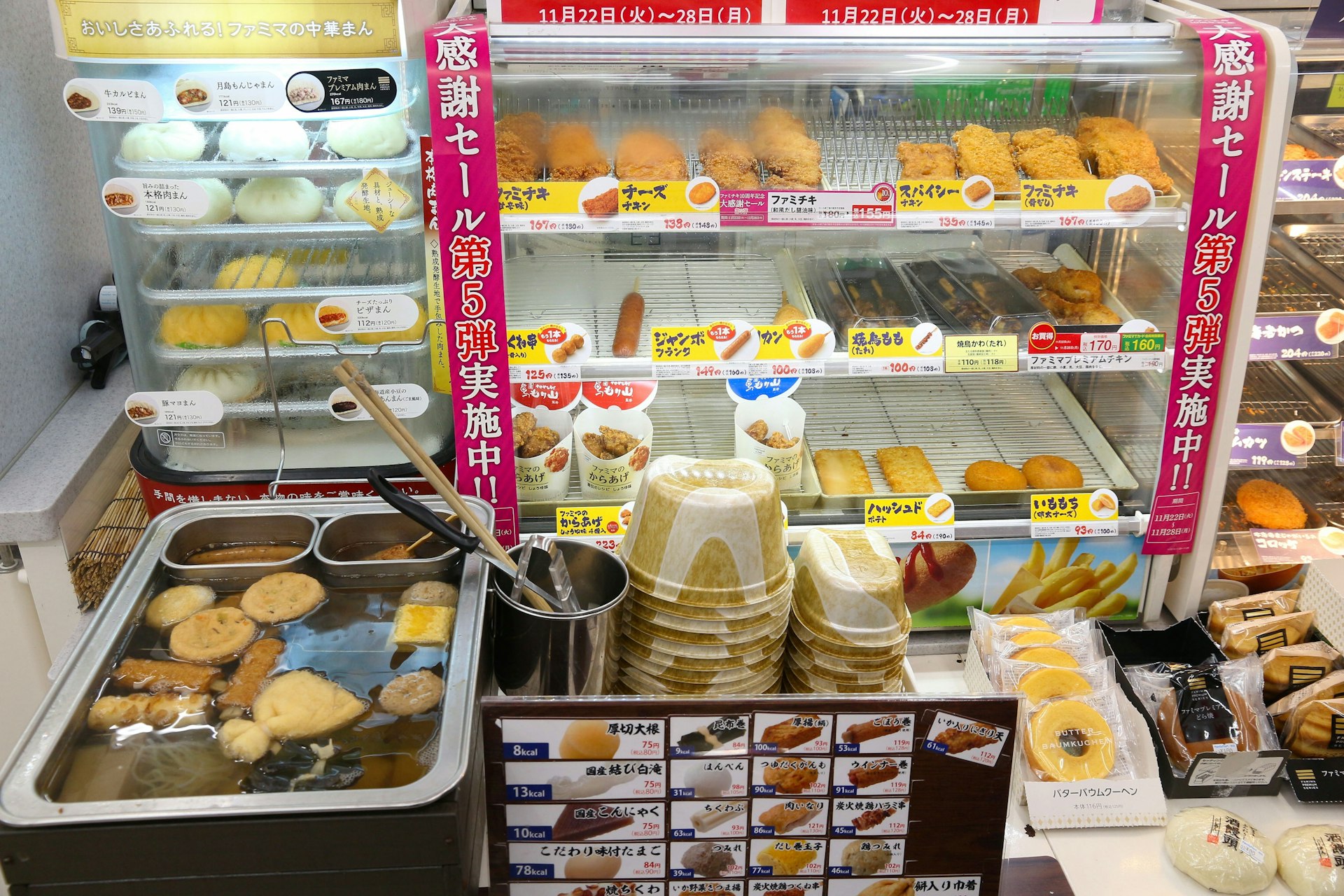
11. Try every Japanese snack in a konbini
Japanese konbini (convenience stores) are one of Japan's most fun local eating experiences.
They might not be fine dining, but they’re part of many Japanese bullet train journeys, and they surprisingly (to most foreigners) offer high-quality snacks wherever you are in the country, 24 hours a day.
Tasty sushi, onigiri (rice balls filled with tuna, meat or plum) and grilled-fish bento meals are delivered around the clock, so you will likely get something fresh. You'll find more novelty and an explosion of choice (and matcha flavors) in the candy, beer and green tea aisles.
Planning tip: The most reliably good konbini are Family Mart, 7-Eleven and Lawson, which all have ATMs accepting foreign cards.
12. Dissolve away your stress in onsen hot springs
An onsen hot spring takes volcanic energy and converts it to a hot bath with the power to evaporate your worries.
A 3000-year tradition, onsen are found all over Japan and are among the most authentically Japanese experiences you can have, whether you're bathing at humble public bathhouses or in Zen gardens.
The natural settings allow you to feel the delicious contrast of the hot waters against the pine-fresh open air.
You can try them in many ryokan (traditional inns) and in resort towns such as Kusatsu and Beppu, where budget options are available in public bathhouses. To literally dip your toes in, there are free outdoor public foot baths in onsen towns.
Local tip: You have to bathe thoroughly at separate facilities before getting into a hot bath. Expect to get completely naked (modesty towels are allowed at some modern baths) and refreshed head to toe.
13. Live out samurai fantasies in Japanese castles
Samurai warriors once ruled Japan, residing around Japanese castles that still exude an aura of power today. Crane your head up to behold Himeji-jō (1580) – the most heavenly white, intact fortress of them all and a UNESCO World Heritage Site.
Then wander the complex along its labyrinth of paths, thick with cherry blossoms (in April). Ascend the six-story castle-keep and peek inside a former princess' residence – the stuff of peak Japanese fantasy.
The castle has crumbled, but samurai residences live on in Tsuwano, a Japanese mountain town where time seems in no hurry.
Zig-zag up to its hillside temple through the many torii gates. At the heart of town, surrounded by sleepy sake storefronts, you can step into former samurai houses, once off-limits to commoners.
If you want a Japanese fairytale without the crowds, Tsuwano delivers it. Golden carp swim the narrow canal running through the tow center as they have for two centuries.
14. Hunt for art outdoors in Naoshima and Hakone
Encountering contemporary art on an island village is a delight. On Naoshima and the surrounding islands, you’ll find traditional Japanese buildings converted into modern art installations incorporating the island’s history; he sunshine and sea air add an extra layer of sensory magic.
One of the most famous and joy-filled is the Yayoi Kusama Yellow Pumpkin sculpture waiting for you at the end of a jetty.
Nearer Tokyo, over a hundred monumental sculptures pepper the hills of Hakone Open-Air Museum. Thanks to this magical setting, works by Japanese and international artists such as Takao Tsuchida, Henry Moore and Picasso transform along with the seasons.
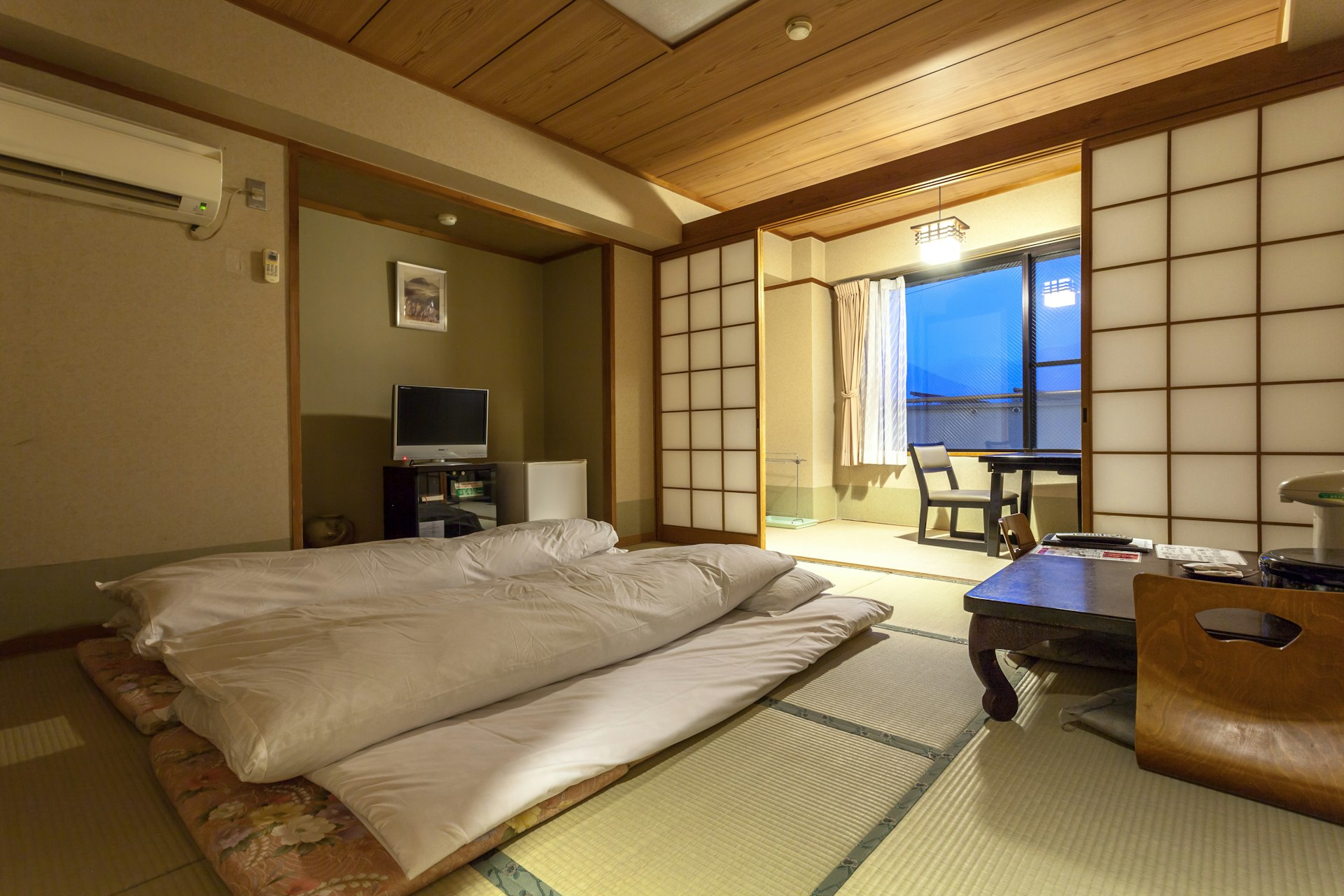
15. Stay in a traditional ryokan
A ryokan is a traditional Japanese inn that, at its best, is fit for a feudal lord. Staying in a ryokan room is easy and rewarding – remove your slippers, slide open the shōji paper-screen door and step across the tatami mat floor of your room to the window.
The sunset flickers through the maple leaves and across the futon. When ready, change into your yukata (traditional cotton robe) and head to the dining room for a multi-course kaiseki meal of the region’s cuisine.
Local tip: Afterwards, take a dip in the onsen or slip straight into your reassuringly firm bed.
16. Embrace winter skiing and ice sculptures in Hokkaidō
Snow poised on the eaves of temples. Trees glazed with ice. Steam wafting over the onsen. Winter in Japan's north peaks in January, and February is the perfect time for skiing and hiking across powdery snow in the wilds of Hokkaidō.
Or enjoy the Japanese art of coziness in izakaya (taverns) with winter comfort dishes like oden fishcakes in a dashi broth.
For families, the ice sculptures of the Sapporo Snow Festival and the bathing wild monkeys of Jigokudani Monkey Park are fun for all ages. You might even spot Japan's iconic red-crowned cranes.
Detour: A side trip for taste-testing at Nikka Whisky is a warming delight.
17. Immerse yourself in digital art at teamLab Planets
There are plenty of themed museums in Japan, but the most avante garde is teamLab Planets. Every surface is a digital screen with a world of flowers, animals and scenery transporting you to another "planet." Prepare to get your feet wet as you walk on water, causing ripples and digital koi goldfish to dart.
Detour: Check out a Nintendo-themed cafe, Pokémon-themed cafe or Tokyo Character Street if you're visiting Tokyo with kids. Tokyo Disneyland and DisneySea are also accessible from the capital.
18. Eat fresh sushi and sashimi
Japan is the largest fish-eating nation in the world. Preparing fish and seafood is an art, and its fish markets are the life force of that tradition. They are impeccably clean places with barely any fishy smells.
Early risers can catch the wholesale auctions at Tokyo's Toyosu Market from behind glass. The laneways of its former home at Tsukiji Market may have become a tourist-focused attraction, but restaurants across the country (especially in coastal towns) still sell excellent platters of sashimi and sushi prepared before you.
If it's all a little confusing, choose sushi sets in sushi-ya (sushi restaurants and bars). Or trust the chef at omakase restaurants, where your personal chef will prepare in-season and classic sushi and sashimi in front of you based on your tastes. Bill shock is quite possible.
Local tip: Karato Ichiba in Shimonoseki is a favorite market for a local vibe. On weekends, fisher folk set up stalls selling bentō of sashimi and cooked dishes of the local specialty, puffer fish (with the deadly parts removed, of course).

19. Make a wish at a Shinto shrine
Shinto shrines are where the Japanese pray or ask for good fortune. The kami (deities) range from Princess Konohanasakuya, the Shinto deity of Mount Fuji, to founders of powerful clans, or neighborhood deities.
A wall of ema (wooden tablets) hangs at many shrines, where you can write down your wish or offering for the deities to read. For a visitor, it’s a chance to reflect and appreciate the tranquil surroundings.
A Shinto shrine is a place in harmony with nature, where the trees and wind are framed by a giant gate.
Pray to the kami of rice at Kyoto's Fushimi Inari-Taisha and its tunnel of vermillion torii gates, ask for good exam results at plum-tree decorated Tenjin shrine Dazaifu Tenman-gū, or pray for general good luck at what is thought to be Japan’s oldest Shinto shrine, Izumo Taisha.
20. Relax in a seaside town
Japan is a country born of the sea. In its seaside towns, you’ll see squid drying on spinning racks in the sun, eat the freshest sashimi, find wooden shopfronts of yesteryear and soak up the lazy rays.
Tomonoura inspired anime maestro Hayao Miyazaki to create Ponyo on the Cliff by the Sea – get ready to be entranced by the green hills that shelter a port of bobbing white boats. In Kamakura near Tokyo, you can stroll from a giant Buddha statue to the black-sand beach and admire sunsets from Enoshima Island.
There are 260 inhabited islands to retreat to. The Oki Islands are an oasis of sea coves, the highest sea cliffs in Japan and pristine waters all to yourself. To really slow down, Okinawa is an island dreamland with its own distinct culture and cuisine.
There are a handful of cat islands where hundreds of spoiled felines roam near the ports. From Tokyo, the most convenient is Tashirojima. Cats have wandered this island for hundreds of years – first to control the mice eating the silkworms, then as a lucky companion to fisherfolk.
Local tip: Matsue has one of Japan’s best sunsets. The giant red orb melts into the water with a silhouette of a torii gate on a distant shimmering island.
21. Sense peace in reborn Hiroshima
Hiroshima today is an attractive city of boulevards and okonomiyaki restaurants. It’s also a city that can change the way you think about world conflicts.
The impressive Peace Memorial Park shows how the human tragedy of the atomic bomb attack on the city has been transformed into a message of peace.
The Peace Memorial Museum is moving, while the outdoor space gives visitors the breathing room to reflect. There, the Children's Peace Monument is decorated with strings of thousands of paper cranes sent from schoolchildren around Japan and the world. The origami symbol of longevity and happiness is an ongoing living message of peace.

22. Discover your favorite ramen
Is it a bowl of noodles in a dashi broth topped with sliced roast pork, or is it a cult? Ramen is both. Evangelists insist that the best ramen is at nothing-fancy ramen-ya (ramen diners), which boomed after World War II.
Today you can slurp it your own way: shōyu (soy sauce) ramen, miso (soybean paste) ramen, Kitakata ramen (pork shōyu), dipping ramen or, the most famous internationally, tonkotsu (pork bone) ramen.
A few ramen restaurants in Tokyo (where the fusion started) even hold a Michelin star: Nakiryu, Konjiki Hototogisu and Ginza Hachigo.
Each region has its own spin on the meal – from thin noodles in a clear soup (closer to its Chinese origins) to a thick ginger broth. Nearly all offer an optional side dish of gyōza (pork dumplings) and a heavenly gooey egg.
23. Surf and chill
Japan has a vibrant scene of two million surfers who know where to find turquoise waters and sparkling sand. Even if you can’t yet catch a wave, the best surf beaches in Japan have a chilled vibe that you can enjoy.
Learn to surf at one of the schools at Shirara-hama, which has year-round, easygoing breaks. Swells tend to be smaller in Japan (outside of typhoons), making it a great spot for newbies.
Ōkinohama in Shikoku is a surfer’s paradise. The jewel-like water is warm year-round and sees very few visitors.
Detour: Even if you are in Tokyo, the waves and summer beach shacks are just an hour away at Yuigahama Beach in Kamakura.
24. Fall in love with Mt Fuji
Outside of Tokyo, Mt Fuji seems to be everywhere you turn. More than Japan's loftiest mountain, Mt Fuji is a spiritual symbol that represents perfect beauty. Hiking its alien slopes takes the dedication of a Shinto pilgrim.
For easier admiration, make day trips to Hakone and the Fuji Five Lakes. Here, whether you see Mt Fuji from behind a frame of golden leaves, cherry blossoms and a shrine or even a konbini; there is something bewitching about witnessing Fuji as it dominates the horizon.

